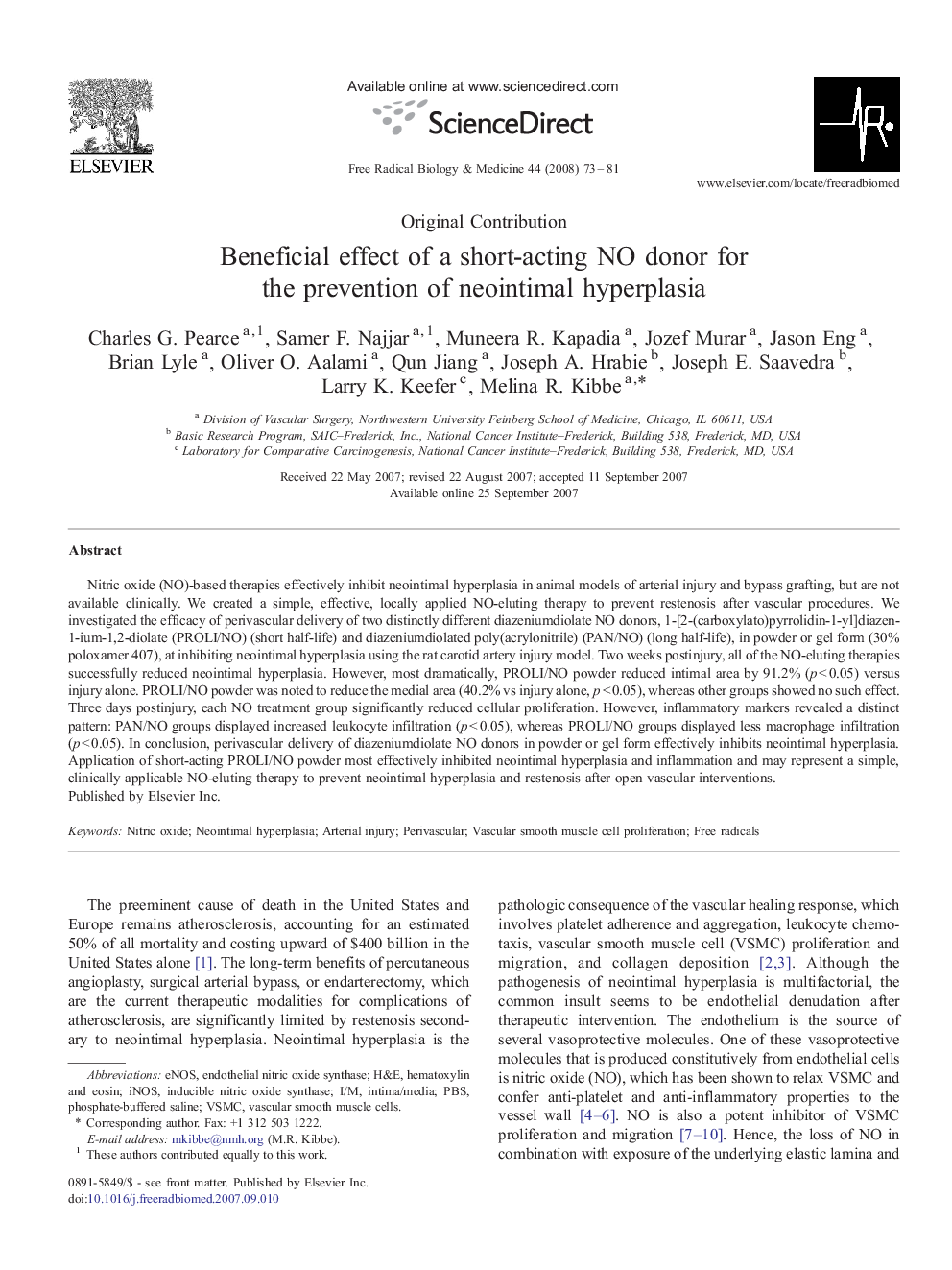| Article ID | Journal | Published Year | Pages | File Type |
|---|---|---|---|---|
| 1910445 | Free Radical Biology and Medicine | 2008 | 9 Pages |
Nitric oxide (NO)-based therapies effectively inhibit neointimal hyperplasia in animal models of arterial injury and bypass grafting, but are not available clinically. We created a simple, effective, locally applied NO-eluting therapy to prevent restenosis after vascular procedures. We investigated the efficacy of perivascular delivery of two distinctly different diazeniumdiolate NO donors, 1-[2-(carboxylato)pyrrolidin-1-yl]diazen-1-ium-1,2-diolate (PROLI/NO) (short half-life) and diazeniumdiolated poly(acrylonitrile) (PAN/NO) (long half-life), in powder or gel form (30% poloxamer 407), at inhibiting neointimal hyperplasia using the rat carotid artery injury model. Two weeks postinjury, all of the NO-eluting therapies successfully reduced neointimal hyperplasia. However, most dramatically, PROLI/NO powder reduced intimal area by 91.2% (p < 0.05) versus injury alone. PROLI/NO powder was noted to reduce the medial area (40.2% vs injury alone, p < 0.05), whereas other groups showed no such effect. Three days postinjury, each NO treatment group significantly reduced cellular proliferation. However, inflammatory markers revealed a distinct pattern: PAN/NO groups displayed increased leukocyte infiltration (p < 0.05), whereas PROLI/NO groups displayed less macrophage infiltration (p < 0.05). In conclusion, perivascular delivery of diazeniumdiolate NO donors in powder or gel form effectively inhibits neointimal hyperplasia. Application of short-acting PROLI/NO powder most effectively inhibited neointimal hyperplasia and inflammation and may represent a simple, clinically applicable NO-eluting therapy to prevent neointimal hyperplasia and restenosis after open vascular interventions.
